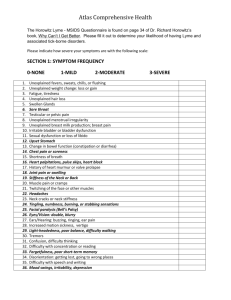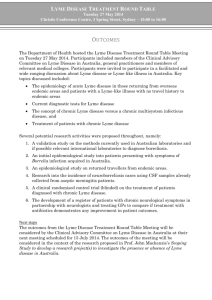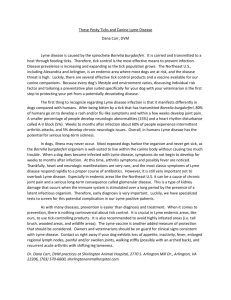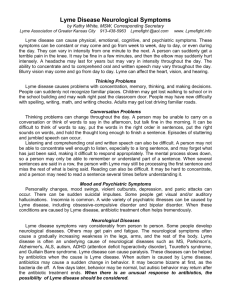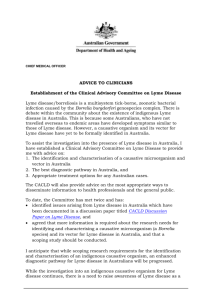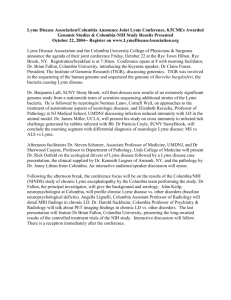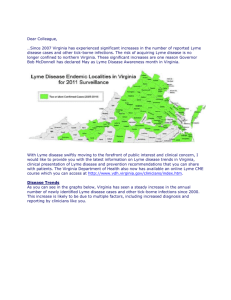Environmental Effects on Lyme Disease Incidence in the State of
advertisement
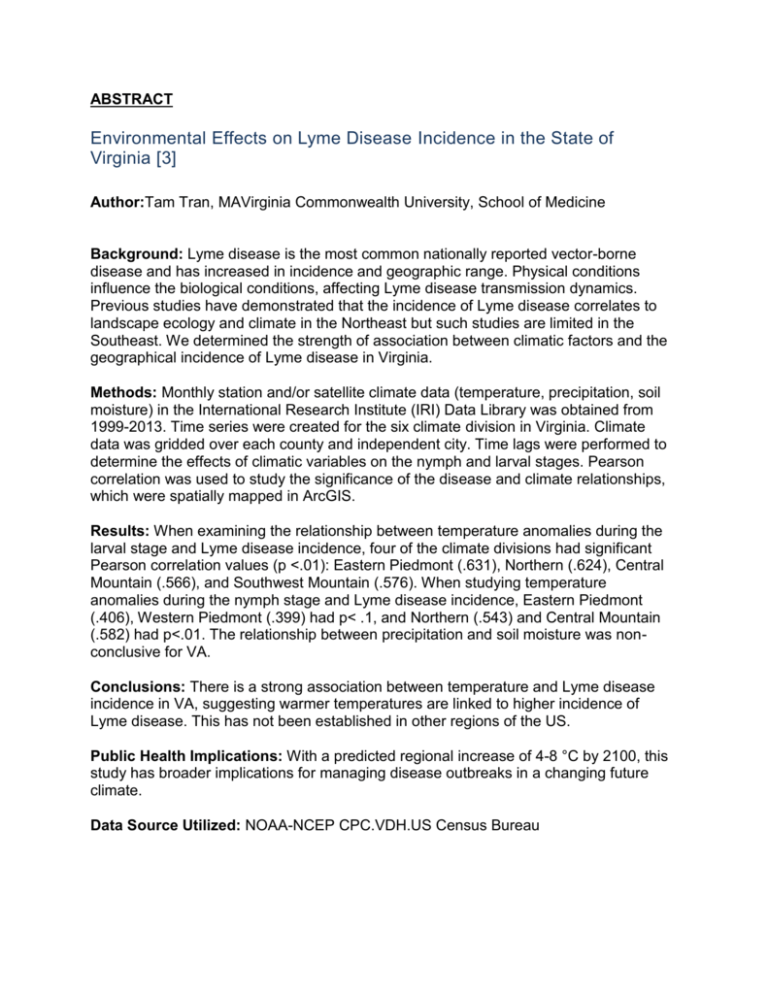
ABSTRACT Environmental Effects on Lyme Disease Incidence in the State of Virginia [3] Author:Tam Tran, MAVirginia Commonwealth University, School of Medicine Background: Lyme disease is the most common nationally reported vector-borne disease and has increased in incidence and geographic range. Physical conditions influence the biological conditions, affecting Lyme disease transmission dynamics. Previous studies have demonstrated that the incidence of Lyme disease correlates to landscape ecology and climate in the Northeast but such studies are limited in the Southeast. We determined the strength of association between climatic factors and the geographical incidence of Lyme disease in Virginia. Methods: Monthly station and/or satellite climate data (temperature, precipitation, soil moisture) in the International Research Institute (IRI) Data Library was obtained from 1999-2013. Time series were created for the six climate division in Virginia. Climate data was gridded over each county and independent city. Time lags were performed to determine the effects of climatic variables on the nymph and larval stages. Pearson correlation was used to study the significance of the disease and climate relationships, which were spatially mapped in ArcGIS. Results: When examining the relationship between temperature anomalies during the larval stage and Lyme disease incidence, four of the climate divisions had significant Pearson correlation values (p <.01): Eastern Piedmont (.631), Northern (.624), Central Mountain (.566), and Southwest Mountain (.576). When studying temperature anomalies during the nymph stage and Lyme disease incidence, Eastern Piedmont (.406), Western Piedmont (.399) had p< .1, and Northern (.543) and Central Mountain (.582) had p<.01. The relationship between precipitation and soil moisture was nonconclusive for VA. Conclusions: There is a strong association between temperature and Lyme disease incidence in VA, suggesting warmer temperatures are linked to higher incidence of Lyme disease. This has not been established in other regions of the US. Public Health Implications: With a predicted regional increase of 4-8 °C by 2100, this study has broader implications for managing disease outbreaks in a changing future climate. Data Source Utilized: NOAA-NCEP CPC.VDH.US Census Bureau



